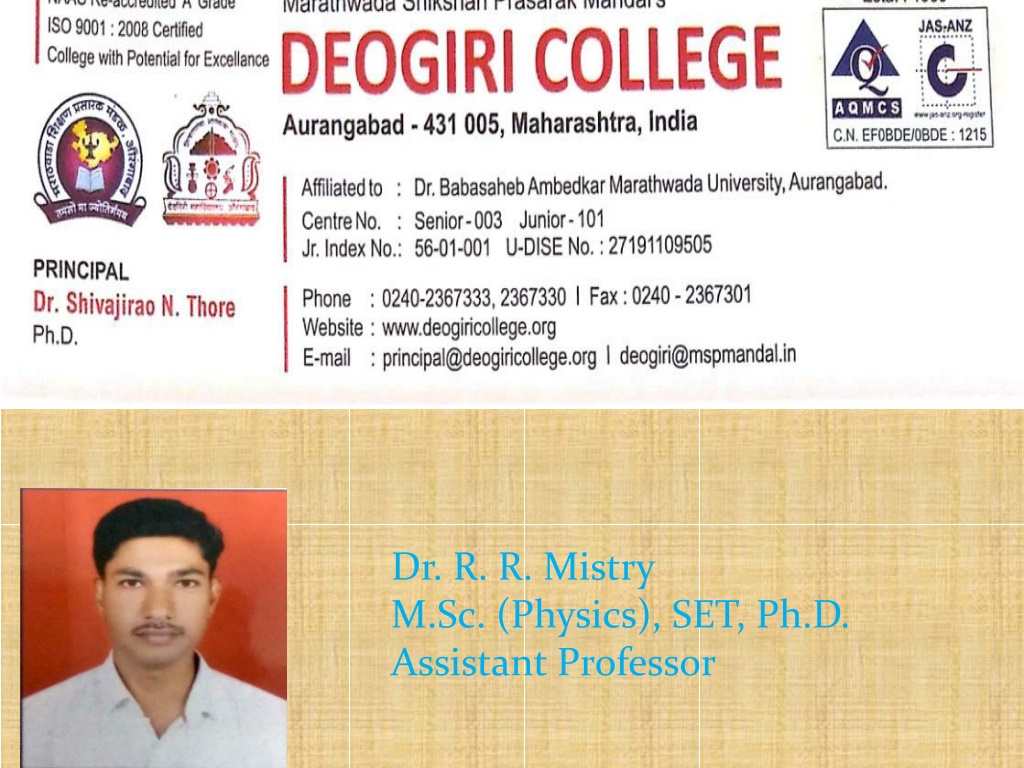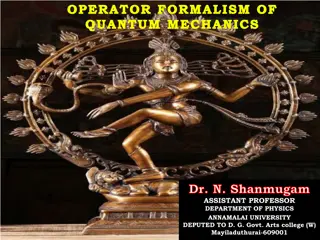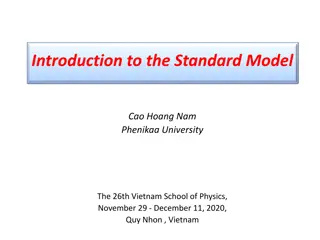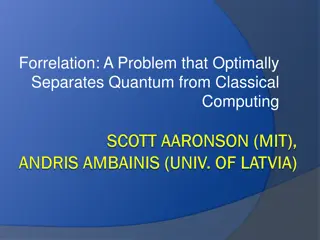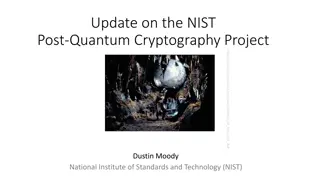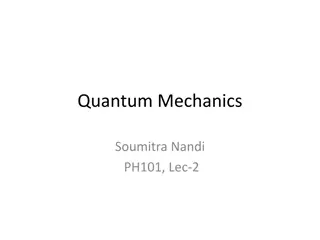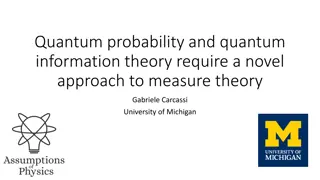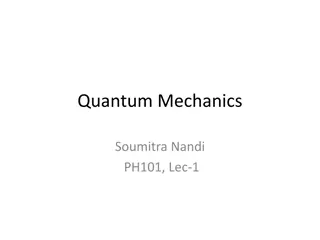Understanding Classical Mechanics and Quantum Theory: A Comprehensive Overview
Explore the fundamental principles of classical mechanics and quantum theory through the insightful teachings of Dr. R. R. Mistry. From the mechanics of particles to the wave-particle duality, delve into topics such as conservation laws, Schrodinger's equation, and the origins of quantum theory. Gain a deep understanding of complex concepts like uncertainty principles and wave functions, presented in a concise and informative manner.
Uploaded on Oct 07, 2024 | 0 Views
Download Presentation

Please find below an Image/Link to download the presentation.
The content on the website is provided AS IS for your information and personal use only. It may not be sold, licensed, or shared on other websites without obtaining consent from the author. Download presentation by click this link. If you encounter any issues during the download, it is possible that the publisher has removed the file from their server.
E N D
Presentation Transcript
Dr. R. R. Mistry M.Sc. (Physics), SET, Ph.D. Assistant Professor
Chapter 1: Classical Mechanics Mechanics of particle, Mechanics of system of particles, Constraints, constraints, Virtual principle, Lagrange s application of Lagrangian formulation-Simple pendulum, Particle in space, Linear Harmonic Oscillator, Atwood s Machine. Classification work, equation, of D Alembert s Simple
Chapter 2: Origin of Quantum Theory Introduction, Failure of Classical mechanics, Black body Radiation(Distribution of Energy), Plank s Quantum Theory, Plank s Quantum Postulates, Linear momentum of photon in terms of wave vector, Plank s radiation law, Wein s law and Rayleigh s equation: Quantum theory of Photoelectric effect, Compton effect. law, Einstein's
Chapter 3: Wave Particle Duality Introduction, de-Broglie s matter waves, de-Broglie s wavelength in terms of energy and temperature, de-Broglie phase velosity and particle velosity (relation between them), Group velosity, Relation between group velosity and phase velosity, Davisson-Germer Experiment, uncertainty principle, Heisenberg uncertainty principle (1)Non- existence of electrons in nucleus (2)Binding energy of an electron in an atom. hypothesis for Heisenberg Application of
Chapter 4: The Schrodinger Equation and its Applications Wave function of a moving particle, Time dependent Schrodinger s Expectation value, independent Schrodinger state form), particle in one dimensional box, Quantization of energy and momentum. wave equation, Time Operators, equation(steady
Mechanics:- Mechanics is the study of motion of physical bodies. The possible and actual motion of physical objects, whether large or small, falls under the domain of mechanics. Conservation Laws:- The word conservation applies in the sense of constantness when some characteristics of motion of a system remain constant in time. There are conservation laws relating momentum, angular momentum, various other quantities. Conservation laws prove to be very powerful tools in solving mechanical problems. to energy, charge linear and
Mechanicsof Particle:- We shall study the conservation laws for a particle in motion mechanics. i) Conservationof linearmomentum: Conservation of linear momentum follows immediately from Newton s second law of motion in the form, using Newtonian
ii) Conservationof Angularmomentum: Angular momentum is the analogue of linear momentum in the case of rotational motion. Consider a particle of mass momentum p at a position r relative to origin O. m and linear
Constraints:- The meaning of constraints is the restrictions. Any kind of restrictions on the motion of the system is known as constrained motion refers to a restricted motion. Motion along a specified path is the simplest example of aconstrained motion. Foreg. (i)In a rigid body, the constraints on the motion of its constituent particles keep the distances between the particles unchanged. constraints. Thus
(ii)Molecules of a gas filled in a container are constrained by the walls of the container. Thus the molecules can move inside the containeronly. (iii)Bob of simple pendulum of length l is constrained to move up. The constraints can be classified into two categories (1)Holonomic Constraints (2)Non-Holonomic Constraints
(i)Holonomic Constraints:- When the conditions of the constraint can be expressed in the form of equations, connecting the co-ordinates of the particle and time t as
If a particle is allowed to move on the circumference of circle, then only one co- ordinate is sufficient to describe the motion, because radius a of circle remains the same. If r is the position vector of particle at any angular co-ordinate relative to thecentre of circle then
Holonomic constraints are further classified as (i)Rheonomic (ii)Scleronomic When the equation expressing the constraint contain the time t as an explicit variable, the constraint is said to be rheonomic . An example of rheonomic constraint is the motion of bob in a simple pendulum. The position vector of bob depends on the time t .
When the equation expressing the constraint is not contain the time t as an explicit variable, it is said to be scleronomic. Foreg. Position of particles in rigid body. (2)Non-Holonomic Constraints:- When the conditions of constraint cannot be expressed in the form of equation (1) connecting the co-ordinates of particles and time t , it is called as the Non-Holonomicconstraints. e.g. For a gas in a container, the constraint is constituted by the walls of container, can not be expressed in the form of a mathematical equation.
